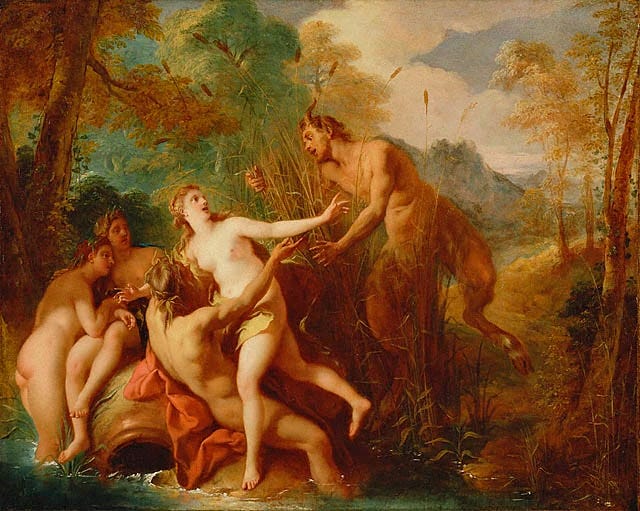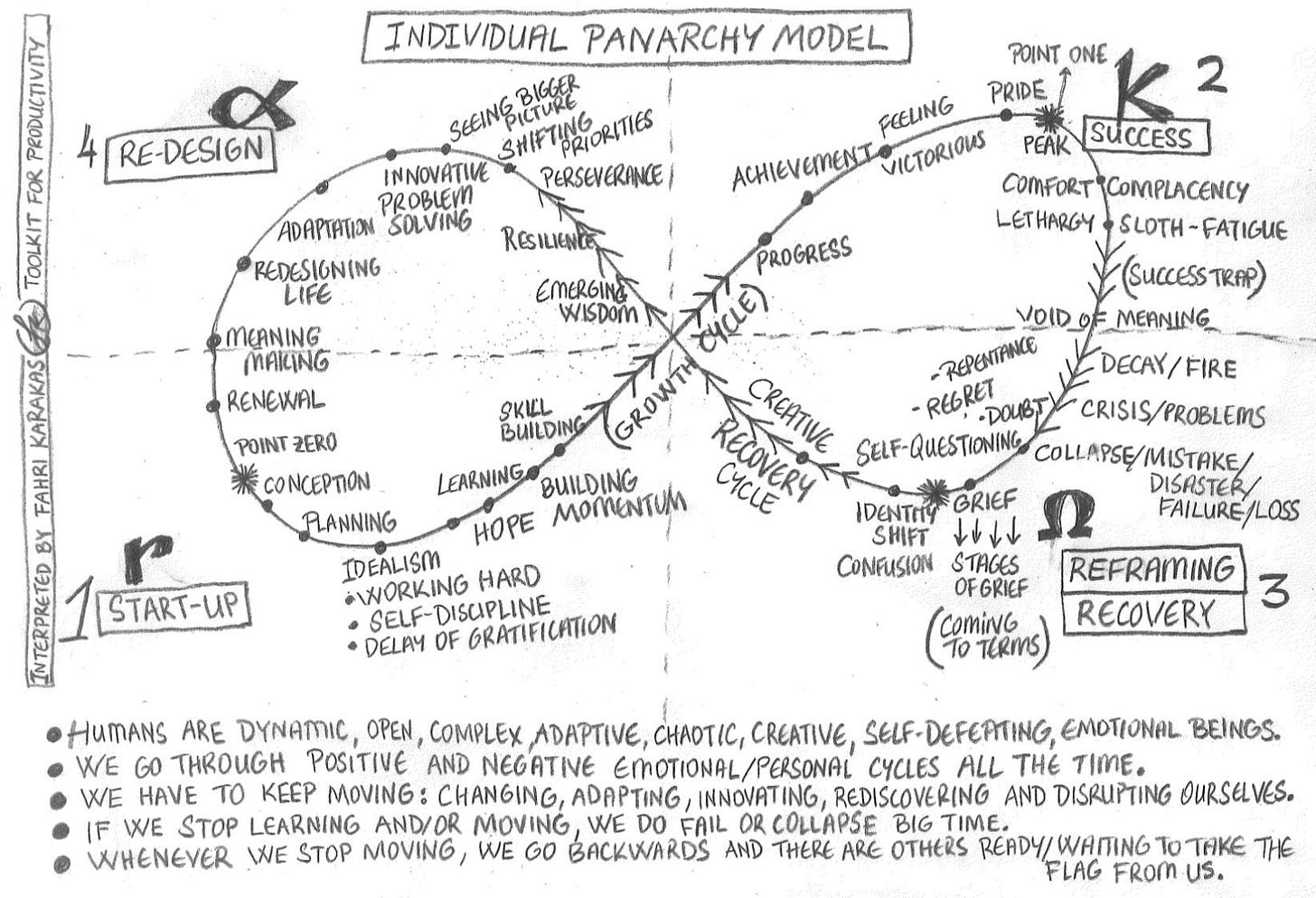I am curious about ecology, because I think it’s a more useful frame to apply on messy human things. It more closely models what humans do—better than engineering or mechanical frames.
Panarchy is a concept that has some relevance to the moment we are in.

Originally developed in 1986 by ecologists Lance Gunderson and C.S. Holling, the Panarchy cycle aims to illuminate how complex systems function, interact, evolve, and sometimes collapse across scales.
The term combines the word pan with the root archy (Gunderson and Holling 2002). Pan was the Greek god of nature, part animal and part human. He scattered discord, spread chaos, and caused panic. Archy is derived from Latin for “rules”. Similar words include hierarchy (sacred rules) and monarchy (one ruler). Short explainer:
The Panarchy cycle has four phases:
Growth/Exploitation (r-phase): Rapid growth and exploitation of resources. In an ecosystem, this could be the colonization of a new habitat. Systems are highly connected but have low potential for change, since everything is focused on growth.
Conservation (K-phase): System becomes more mature and stable. Connections within the system are strong and resources are used efficiently. However, the system becomes less flexible, less able to adapt to changes. This can lead to vulnerability, as both ancient wisdom traditions and modern science reveals.
Release/Creative Destruction (Ω-phase): The Omega phase involves the release of accumulated resources and energy, often through a crisis or collapse. Examples include natural disasters in an ecosystem or an economic recession in an economy. The system's structure breaks down, releasing resources and creating opportunities for innovation. (Insert “You are here” symbol.)
Reorganization (α-phase): The Alpha phase is marked by high potential and low connectivity. New ways of doing emerge, and the system explores new paths, leading to a new growth phase.
In addition to these phases, three key properties are essential in understanding panarchy:
Connectedness: Strength of the relationships between the components of a system. High connectedness can lead to stability but also to rigidity, while low connectedness allows for more flexibility and adaptability but more instability.
Potential: The accumulated resources and possibilities within the system. High potential can fuel growth and development, but can also lead to instability if not properly managed.
Resilience: Capacity of a system to absorb damage/disturbance and maintain its basic structure and function. Crucial for long-term survival and health.
There are two pathways winding through the metaphorical woods of Panarchy, from Conservation through Reorganization: Revolt and Remember.
Revolt1 occurs during the transition from Conservation to Release phases, while Remember2 takes place in the space between Release and Reorganization. These pathways emphasize the interconnectivity and interdependence of different scales within complex adaptive systems, highlighting how changes at one level can impact other levels.
The trouble with reality is it is always changing, moving, morphing, sliding.
The concept of Panarchy provides a template to understand the dynamic nature of complex systems, showing how stability and change are interconnected and necessary for the continual evolution and overall health of the system.

It’s a cold comfort in the moment, when something bad is happening to you or someone you love, to think things are unfolding as part of a larger pattern, an ebb and flow.
Sometimes the forest has to burn, so new things can grow. We have to let go of what isn’t working anymore, and discover what is more suited to the moment.
Currere Certamen Tuum / Run Your Race
Revolt is characterized by a rapid, often unexpected, collapse or transformation of the system. This could be a sudden environmental change that drastically affects the ecosystem, or a rapid political upheaval, market crash, or technological disruption. This sub-component of Release is crucial for introducing new ideas, innovations, and adaptations that challenge the status quo. It can also lead to chaos and uncertainty, however.
Remember follows from collapse/transformation. The system repurposes the remnants of its previous structures and processes to reorganize and renew itself. This is essential for learning and integrating lessons from the past. Remember helps from the foundation for the next cycle of growth and development. It can lead to a resurgence of the system in a more resilient and adapted form, or result in the system getting stuck in a non-productive state.





I find these organic cycles of growth/change models so very illuminating, Adam. A section of the panarchy cycle includes Charles Handy's "S-Curve" that I use a lot to discuss individual and organizational resistance to change. I wrote about that here if you're interested:
https://bairdbrightman.substack.com/p/ready-to-change
Beautiful bit of kit.
"Ancient wisdom traditions' strikes a chord. Beautiful painting.
You're right about change. Marshal McLuhan also came to that, but did not say it was a reason for trouble. Maybe the fact that reality is not still, there is no stillness, highlights a human limit, or inability of the human mind to imagine infinity. But we can still embrace being part of that infinity.